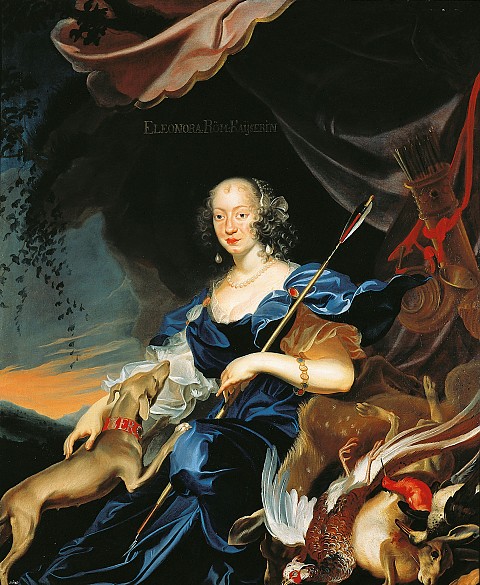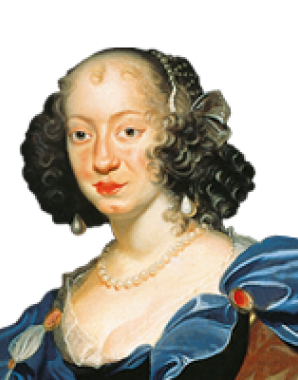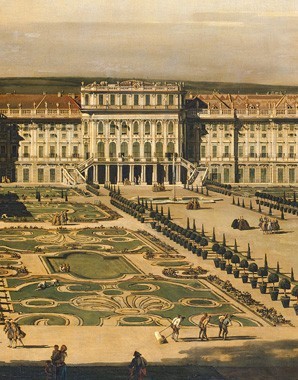Ferdinand III, Eleonora of Gonzaga and the Italians in Vienna
Eleonora of Gonzaga, the third wife of Emperor Ferdinand III, was to shape cultural life in Vienna. Thanks to her, life at the imperial court took on a pronounced Italian character. The northern Italian early Baroque style dominated contemporary painting, architecture, music and literature.
Despite the great difference in age between them, Eleonora found a congenial companion in Ferdinand, who like herself was receptive to the arts. Ferdinand himself was an enthusiastic musician and also tried his hand at composing, exhibiting considerable talent. He passed on not only this talent to his descendants but also the strong Italian influence in the musical culture of the Habsburg court. Vienna became a major centre for the cultivation of music in Europe.
Together with her husband Eleonora founded a literary academy on the Italian model. Eleonora wrote poetry herself, of a mostly religious nature. Following her example, Ferdinand too wrote poetry in Italian, a language of which he had a perfect command.
Even after the death of her husband Eleonora remained the focus of cultural life at the Viennese court. Her dower residence was the palace at Schönbrunn, which she had remodelled in the Italian style as a château de plaisance with an important early Baroque garden.
In her love of opposites, Eleonora was an almost archetypical embodiment of the Baroque age. She united extreme religiosity with a love of magnificence, devoting herself in mystic ecstasy to penitential exercises, yet patronizing courtly entertainments with the same degree of passion. The empress founded a religious society of noblewomen to which she gave the name Slaves of Virtue. She was also responsible for founding the Order of the Star Cross: after a conflagration at the Hofburg in 1668 an important relic, a particle of the True Cross, was found unharmed in the debris. In commemoration of this ‘miracle’ she founded the Order of the Star Cross, which was to become the highest decoration for ladies at the Viennese court.
In the latter half of the seventeenth century, not least thanks to Eleonora, the Viennese court became an important centre of Italian cultural trends that were to spread across the whole Monarchy. Italian painters, architects and craftsmen dominated the art market in Central Europe. In artistic circles italianitá was all the rage, whether an artist was Italian or not, and it became almost a precondition of success for any artist to have studied in Italy.















